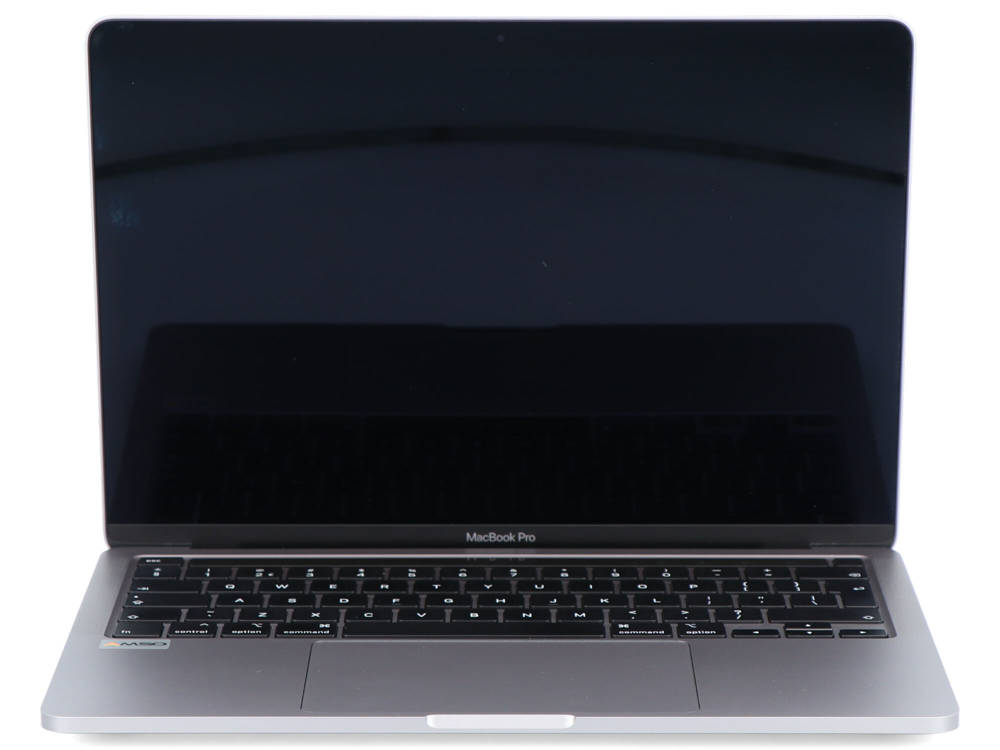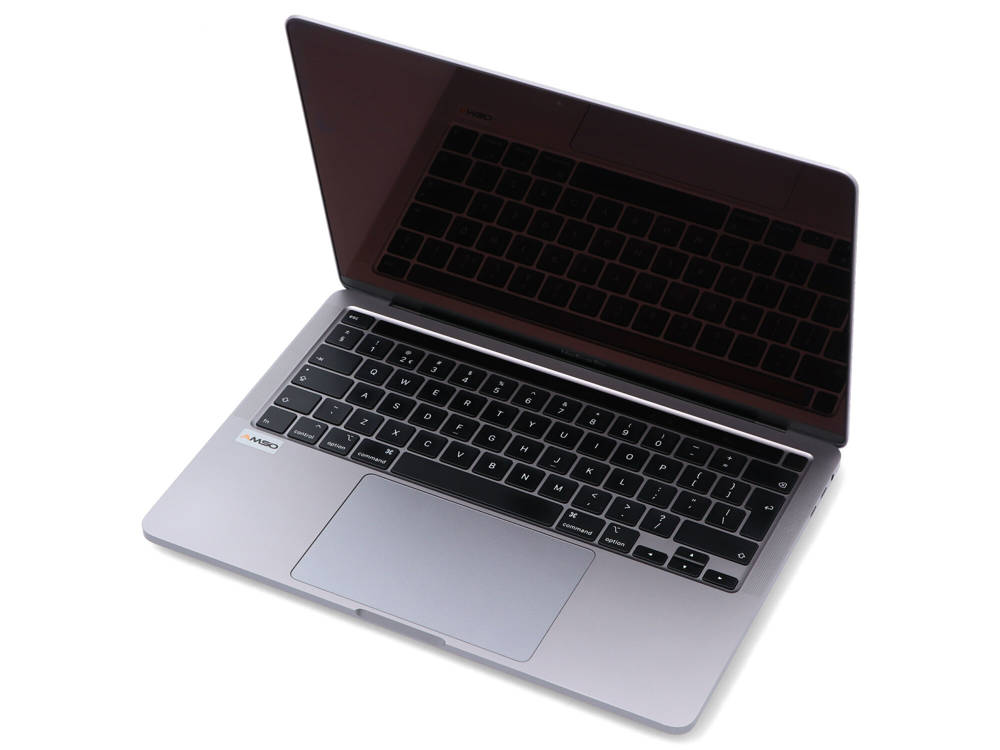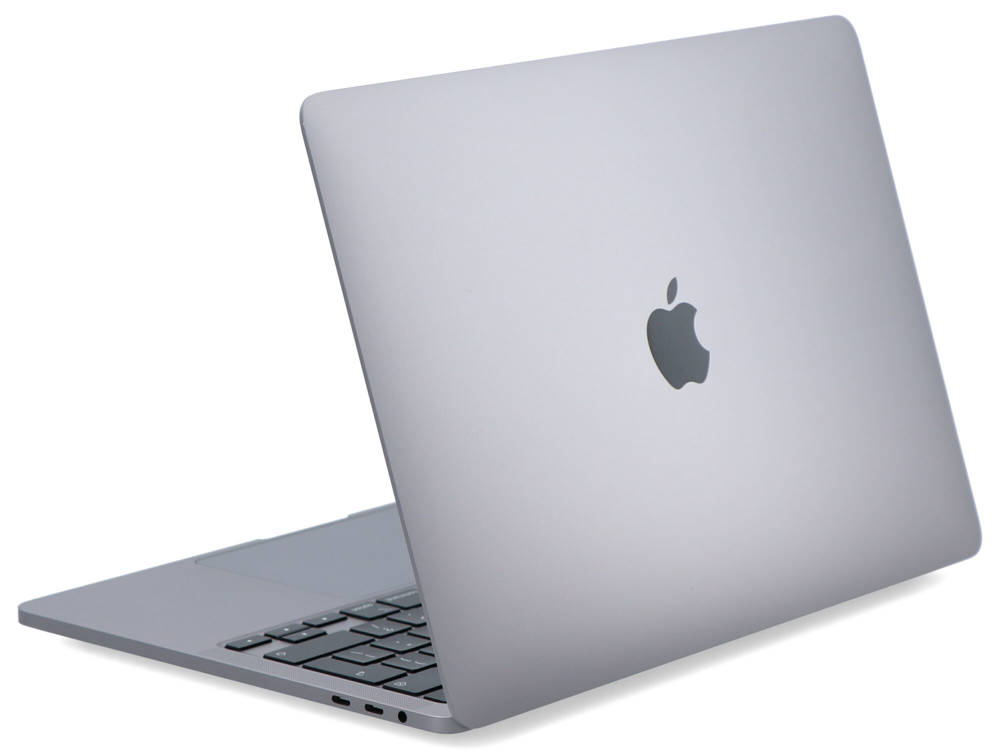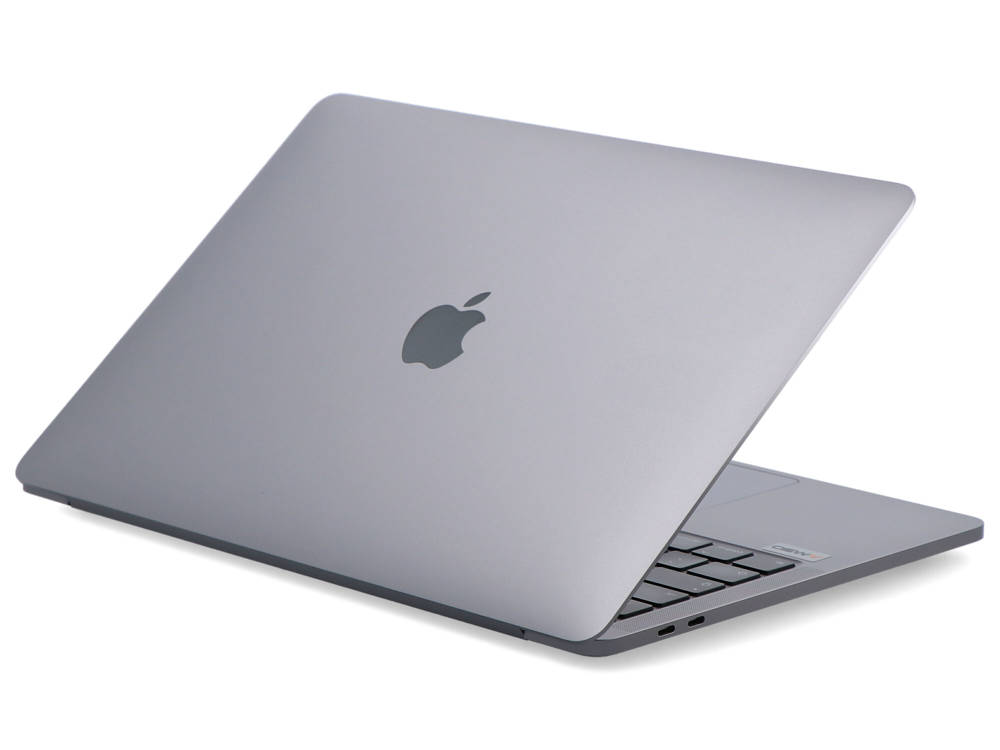MacBook Pro A2251 13 2020 Review
MacBook Pro A2251 13 2020 review
The new generation MacBook Pro 13 continues the brand's tradition of offering users performance, elegance and innovation. With a powerful processor, fast SSD and high-quality screen, this laptop seems to meet the expectations of even the most demanding users. Now it's time to test it and write about what it's really like.
The new Apple laptop, the MacBook Pro 13, is slightly thicker than the previous model, but the shape of the laptop itself remains unchanged. You can still choose between two color options - silver and space gray. The difference in thickness only becomes apparent when comparing last year's model directly with the new one. The extra 0.7mm results from the use of a new keyboard, which has reverted to a more traditional scissor mechanism and offers a more comfortable typing experience.

It is worth noting that the quality of the casing remains at the highest level. Although slimmer and lighter competitor models are already on the market, the aluminum unibody construction continues to impress with both quality and stability
The situation with the connections has not changed; you can choose between two and four Thunderbolt 3 ports with USB-C connections. The processor of the test device is based on the current Intel Ice Lake architecture, but Apple has still not equipped it with the faster Wi-Fi 6 standard. Our standardized test with the Netgear Nighthawk RAX 120 router shows good transmission speeds for the Wi-Fi 5 module
Web camera - old FaceTime HD 720p camera
The design of the MacBook Pro 13 A2251 doesn't include narrow bezels, but you still have to wait for a good webcam. It seems that the quality of the FaceTime HD camera has not changed in recent years. We think that the manufacturer should introduce better cameras, especially in light of the current situation with remote working
The MacBook Pro 13 is the latest product to receive the new Magic Keyboard. The flat but precise butterfly keyboard, which has often been criticized for reliability issues in recent years, has now been replaced by a more conventional scissor mechanism. The key travel is 1 mm, and the typing experience is more reminiscent of older MacBook models such as A1398. If you didn't like the butterfly keyboard in the old models, it's definitely worth checking out the new version.

There are also minor improvements like the smaller arrow keys (easier to find with your fingers), a dedicated Esc key and a slightly separate power button. You again get the Touch Bar instead of the traditional function keys, but there can still be debate about the benefits of this small touch display. This largely depends on the software support, but the Touch Bar is often used as a functional addition, especially by programs such as Photoshop
Touchpad in the A2251
The large touchpad has not changed, but this is not a problem. The Apple touchpads have been a benchmark for laptops for many years when it comes to precision, fluid movement and operation. Of course, you benefit here from the good optimization for the macOS operating system, and we have no objections. The touchpad also works very well using the Windows operating system, and only certain commands such as "drag and drop" are limited, but this is more of a software issue.
Screen in the A2251
The 16:10 aspect ratio screen retains the same parameters, i.e. 2560x1600 pixels, and the subjective image impression is again excellent. In contrast to the Windows system, macOS has no problems with scaling. The brightness is adjusted automatically and smoothly, and we also like the TrueTone function (automatic adjustment of the color temperature depending on the ambient light). Compared to the MacBook Air, the IPS display of the MacBook Pro covers a larger P3 color space
We can detect pulse width modulation (PWM) at brightness levels of 75% and below, but the frequency is extremely high, at 113 kHz, which shouldn't cause any problems. Despite the high brightness, we do not notice any backlight bleeding
The panel ID differs from the previous model, but the measurement results are basically identical. The brightness reaches over 500 nits, and the contrast ratio is an excellent 1600:1. Our measurements with the CalMAN software and the X-Rite i1 Pro2 spectrophotometer show very accurate colors right out of the box. Additional calibration is not really necessary. We again measured a significantly higher maximum brightness using the Windows operating system (>600 nits). Both the slightly smaller sRGB color space and the larger P3 color space are fully supported, so the screen is also suitable for editing photos and videos. An external monitor is only required if you need a wider AdobeRGB color space.

Viewing angle stability is excellent. The MacBook also works well outdoors, despite the glossy surface. The screen is not as reflective as many competing models, so you can work comfortably even in bright environments.
Performance - MBP 13 with Intel Ice Lake processor The new MacBook Pro 13 from 2020 (4x Thunderbolt 3) is available with two different Intel processors: Core i5 and Core i7. Both chips have the same integrated graphics card (iGPU) and differ only in the maximum core clock speed. Customers can also choose between 16 and 32 GB RAM and storage sizes of 512 GB, 1 TB, 2 TB and even 4 TB
Processor and performance
Ice Lake does not bring any significant performance improvements. Apple uses custom Intel processors, which are exclusively available for the MacBook and can be recognized by the "N" in the model name. The Core i5-1038NG7 has a higher TDP of 28 W compared to standard mobile chips, but this value does not play a major role in Apple devices. Apple does not limit the power consumption of the processor, so the performance of the CPU is only limited by the cooling capacity. We notice a slight improvement in 2020: while the old model could handle ~33W, the new model can now handle ~35W

However, this is where the good news ends, as we can once again see that Intel has some issues with its 10nm process. While the old Core i5-8279U ran at around 3.3-3.4 GHz at 33 W, the new Core i5-1038NG7 only reaches 3.3 GHz at 35 W. The Ice Lake performance per MHz is slightly better, so the result is quite similar, with a slight advantage for the new model. However, this is only noticeable in tests, but not in practice. Nevertheless, I have to be fair and say that the processor performance outperforms the competition. This is mainly due to the cooling solution, but honestly, we don't know why Apple had to use custom Intel processors
System performance
The subjective impression of the MacBook Pro 13's performance is excellent. Thanks to the SSD storage, sufficient RAM and the fast quad-core processor, all commands are executed quickly and lags are practically imperceptible. The PCIe SSD is also a fast data transfer model, reaching maximum transfer speeds of around 2400 MB/s. There are even faster drives, but the differences are hardly noticeable in practice

GPU performance
Iris Plus Graphics G7 The Ice Lake processor is equipped with the Iris Plus Graphics graphics card, which is responsible for all graphical calculations. This is a faster version of the G7 with 64 execution units. The performance is at the expected level. Compared to the Iris Plus Graphics 655 (with eDRAM cache) of the previous MacBook Pro 13, the performance is about 30-40% higher.
The consistent performance is definitely a plus, as neither the 3DMark stress test (Fire Strike) nor the loop playback of The Witcher 3 (here with medium settings) shows a drop in performance. Nevertheless, the MacBook Pro 13 is not ideal for gaming. Older titles are usually playable, but high settings are difficult to achieve. More modern games are definitely limited to low settings and resolutions.

Fan noise
The dual-fan cooling solution hasn't changed, and the MacBook generally remains quiet when using simple applications. When the fan is operating at its lowest setting, you can only hear a soft hiss when your ear is held directly to the device. The fan's behavior really depends on the processor load. If we only load the integrated graphics unit (for example with the Unigine Valley test), it takes a few minutes for the fans to even start spinning. It gets significantly louder when the processor is under load. Average loads, including gaming, usually result in a noise level of around 36 dB(A), and maximum loads even measure up to 42 dB(A). Our measurement results are therefore practically identical to the previous model. We also did not detect any other electronic noises such as coil beeping.
Speakers and sound
I find that the stereo speakers of this laptop offer excellent bass and a wealth of volume for such a small device, definitely a more spatial sound than the speakers of the MacBook Air. Two tweeters radiate upwards through the grilles above the keyboard, while the low frequencies come from the vents at the bottom of the laptop.
Battery operation:
Idle power consumption is slightly higher than before, but the results are very similar during load. We can detect a maximum load of 65.2 W under load, but it stabilizes at around 57 watts. The included 61 W power supply is therefore sufficient, but does not leave a large power reserve (e.g. for charging the battery). We were quite surprised that the WLAN working time was slightly longer than the time for playing video material on our test device. However, both results are still very good at 12 and 11.5 hours respectively, with the MBP 13 also outperforming the competition. If you use the maximum brightness, the WLAN working time drops to around 7.5 hours.
To summarize, the MacBook Pro 13 is presented as a solid laptop with an impressive feature set. The processor performance, fast SSD and high-quality display allow the user to work smoothly even on more demanding tasks. The new Magic Keyboard seems to be a relief compared to previous models

GPU performance and battery life remain at satisfactory levels, although the graphical load may be limited when playing games. It is also to be appreciated that build quality is good, system noise is low and power efficiency is handled effectively.